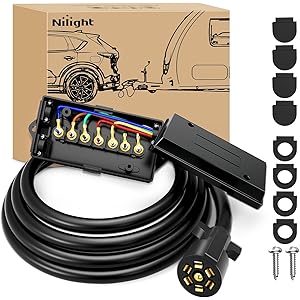As a proud mobile home owner, I understand the unique challenges that come with maintaining and enhancing our living spaces. One of the most visible and impactful areas to focus on is the walls of your mobile home. Whether you’re dealing with unsightly damage, outdated designs, or simply want to refresh the look of your space, I’ve gathered a comprehensive guide to help you transform your mobile home walls into something you’ll love.
Understanding Mobile Home Walls
Mobile homes often come with specific types of wall materials that differ from traditional homes. Typically, these walls can be made from:
- Vinyl or fiberglass panels
- Gypsum board (drywall)
- Wood paneling
- Particleboard
Understanding the materials is crucial, as it will dictate how you approach repairs, refinishing, or renovations. For instance, drywall may need different treatment compared to wood paneling. Let’s dive into the most common issues and how to tackle them.
Common Issues with Mobile Home Walls
Over time, mobile home walls can develop a range of issues. Here are some of the most common problems you might encounter:
- Dents and Dings: These often occur from moving furniture or general wear and tear.
- Water Damage: Leaks from plumbing or roof issues can cause stains or warping.
- Peeling Paint or Wallpaper: Older finishes may deteriorate and need refreshing.
- Cracks and Gaps: These can appear due to settling or temperature changes.
Identifying the issue is the first step in fixing it. Let’s explore how to address these common problems effectively.
Step-by-Step Guide to Repairing and Refinishing Your Walls
1. Assess the Damage
The first step in your wall transformation journey is to assess the current state of your walls. Walk through each room and take notes on:
- Areas that need repair
- Sections that require a fresh coat of paint
- Design elements you want to change
Having a clear idea will help you prioritize your tasks and budget accordingly.
2. Gather Your Tools and Materials
Once you know what needs to be done, gather the necessary tools and materials. Here’s a checklist to get you started:
- Patch compound
- Sandpaper (various grits)
- Paint (preferably low-VOC)
- Paintbrushes and rollers
- Drop cloths
- Caulking and caulking gun
- Utility knife
- Measuring tape
- Level
Having everything on hand will make your project run smoothly.
3. Repairing Dents, Dings, and Cracks
For minor dents and dings, use a patch compound to fill in these imperfections. Here’s how:
- Clean the area surrounding the damage.
- Apply patch compound with a putty knife, smoothing it out.
- Allow it to dry according to the manufacturer’s instructions.
- Once dry, sand it down until it’s flush with the wall.
For larger cracks, you may need to apply a strip of fiberglass tape over the crack before applying the patch compound.
4. Addressing Water Damage
If you discover water damage, it’s critical to find the source of the leak before proceeding with repairs. Once the issue is resolved:
- Cut out any damaged drywall or paneling.
- Replace it with new material.
- Seal the edges with caulk to prevent future leaks.
5. Refreshing Paint and Wallpaper
Once repairs are complete, it’s time to breathe new life into your walls. Here’s how to approach painting or wallpapering:
- If painting, choose a color that complements your existing decor. Light colors can make the space feel larger.
- For wallpaper, opt for designs that reflect your personality and style.
- Apply primer before painting, especially if you’re going from a darker to a lighter color.
Remember to use low-VOC paint to improve air quality in your home.
6. Adding Texture and Style
To elevate your walls further, consider adding texture. Here are some ideas:
- Shiplap: Install shiplap for a modern farmhouse look.
- Wainscoting: This adds elegance and visual interest.
- Stenciling or Wall Decals: Personalize your space with creative designs.
These elements can dramatically change the ambiance of a room.
Case Study: A Mobile Home Transformation
Let me share a story of a friend who transformed her mobile home walls with these methods. She had a 1980s model that looked dated and worn. After assessing the walls, she found numerous dents, peeling paint, and water stains. With a budget of $500, she:
- Repaired the dents and water damage.
- Painted the walls a soft, calming blue.
- Added a shiplap accent wall in the living room.
- Incorporated decorative wall decals in her child’s room.
The transformation was stunning. Her mobile home felt fresh, inviting, and more like a reflection of her family’s personality. This success story highlights the power of DIY repairs and enhancements.
Statistics and Insights
According to the National Association of Home Builders, approximately 17 million people live in mobile homes in the United States. Many mobile home owners are looking to improve their spaces rather than move. Investing time and resources into home improvements can increase property value by as much as 20%.
Additionally, a survey conducted by HomeAdvisor revealed that 70% of homeowners believe that DIY projects enhance their home’s value and livability. This means you’re not just fixing your walls, but also making a valuable investment in your home.
FAQs About Mobile Home Wall Repairs
1. Can I paint over wallpaper?
Yes, you can paint over wallpaper, but it’s best to ensure that the wallpaper is well-adhered and not peeling.
2. How do I fix a large hole in my mobile home wall?
You can repair a large hole by cutting a piece of drywall to fit, securing it with screws, and then applying joint compound to smooth it out.
3. Is it worth it to hire a professional for wall repairs?
If you’re uncomfortable with DIY repairs, it may be worth hiring a professional. However, many repairs can be tackled with some patience and research.
4. What type of paint is best for mobile home walls?
Low-VOC, water-based paints are ideal for mobile home walls, as they are safer for indoor air quality.
Conclusion
Transforming the walls of your mobile home is not just about aesthetics; it’s about creating a space that reflects who you are and enhances your quality of life. By following the steps outlined in this guide, you can confidently tackle any wall repair or improvement project. From assessing the damage to adding personal touches, each step is an opportunity to make your mobile home more beautiful and functional.
So, roll up your sleeves and dive into this rewarding project. You’ll be amazed at the difference it makes, not just in your home, but in your overall living experience.
If you found this guide helpful, please consider signing up for our newsletter for more expert tips and DIY guides. Share this article with friends or on social media to help others transform their mobile home walls as well!
Nilight Heavy Duty 7 Way Inline Trailer Plug 8 Feet Connector Cable 7Pin RV Round Extension Wiring Harness Weatherproof Junction Box for RV Towing Car
$32.39 (as of November 15, 2025 07:52 GMT -03:00 - More infoProduct prices and availability are accurate as of the date/time indicated and are subject to change. Any price and availability information displayed on [relevant Amazon Site(s), as applicable] at the time of purchase will apply to the purchase of this product.)
Sign up for our newsletter and stay up to date with exclusive news
that can transform your routine!




